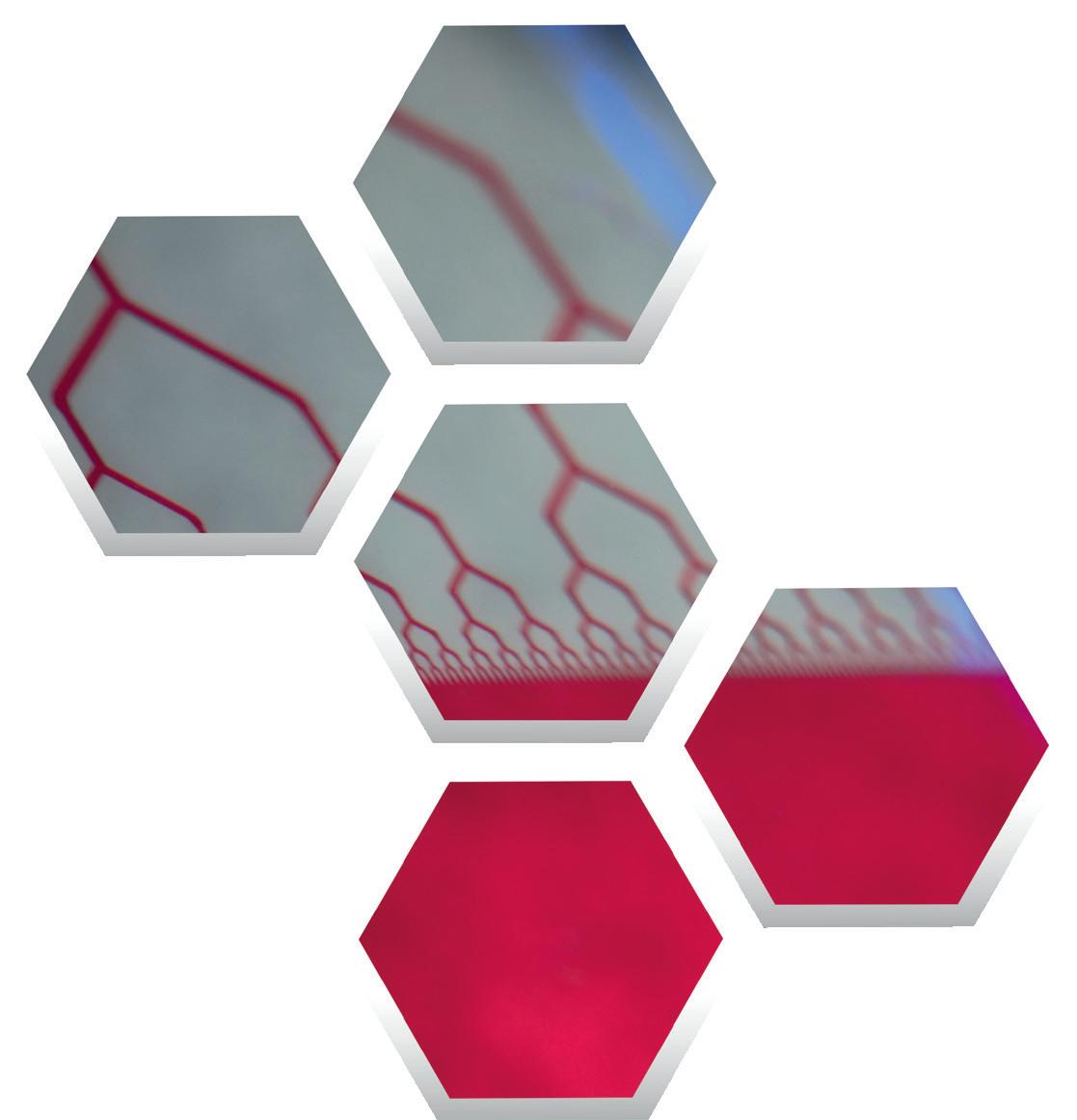
5 minute read
Journey to Lab-on-a-Chip
JOURNEY TO LAB-ON-A-CHIP Professor takes research into the marketplace
JACKIE CONNER
Advertisement
STEVE ZYLIUS
ABRAHAM LEE IS NO STRANGER TO PURSUING AMBITIOUS RESEARCH. The UC Irvine biomedical engineering professor has over 40 issued patents – several of which have been licensed to major corporations – and he is director of the Center for Advanced Design and Manufacturing of Integrated Microfluidics and outgoing chair of the Department of Biomedical Engineering. Lee’s efforts to solve problems linked to neurodegenerative diseases and pharmaceutical efficacy all stem back to microfluidics and his early ability to combine engineering and biological systems. Through collaborations on and off campus, Lee, who arrived at UCI in 2001, helped grow everything big and small, from the biomedical engineering program, to several startup ventures, to developing tiny organs to help advance drug development and precision medicine.
Originally trained as a mechanical engineer with a doctorate focusing on microelectromechanical systems, Lee developed clinical tools to treat stroke at the Lawrence Livermore National Lab (LLNL) from 1992 until 1999.

This led him toward a field that, at the time, was brand new: biomedical engineering. “It was an exciting time for national labs in general to spin off technology to the commercial or private sectors,” he says. “It was a new era.”
After leaving LLNL, Lee spent three years at the Defense Advanced Research Projects Agency (DARPA), where he worked as a program manager in the Micro Technology Office. He established and developed a $60 million program coined Biofluidic Chips or “BioFlips,” which incorporated the principles and technologies of mechanical engineering into living systems. “I realized you need to deal with fluids in the devices we developed because the body is primarily water, and I also realized it’s not just the doctors that need to get down to the biology,” he says. The program’s goal was to develop a physiological status-monitoring system for troops to track their wellbeing and combat preparedness. Eventually, he worked with generals to develop this system as a form of national security and defense.
Then, he began thinking about diagnostics and treatments for use in conjunction with the Human Genome Project, an international scientific effort that mapped the entire human genome. “We were starting to get to the core of the few molecules or cells or bad pathogens that were triggering this whole thing,” said Lee. “People refer to it today as precision medicine. That was the stage where I think a lot of these technologies were starting to form.”
During a short stint at the National Cancer Institute, Lee learned more about


the biology of cancer, and although he had planned to go back to LLNL, he came to UCI instead. “That experience made me feel that I really wanted to be the one involved in the projects, instead of managing a portfolio of projects,” says Lee. “So I applied for a faculty position.”
After moving to Irvine, Lee discovered a potential collaboration with fellow faculty and neighbor Lisa Flanagan, associate professor of neurology. Discussions with Flanagan about a microfluidic pump he had developed at LLNL led the two to discover that the technology was applicable to her research, which required ways to enrich and sort neural stem cells for treating neurodegenerative diseases.
By separating the cells, Lee and Flanagan were able to better identify stem cells by their individual electrical signatures. Flanagan is continuing this research, with the ultimate goal of treating neurodegenerative diseases such as Alzheimer’s and Parkinson’s. The coincidental collaboration fostered 10 years of research, publications and patents.
UCI’s biomedical engineering center expanded into a department in 2002. Lee and a few other faculty members helped grow the small-but-mighty curriculum, which later became one of UCI’s most popular majors.
“There was a lot of interest and excitement because Irvine is home to a large number of biomedical device companies,” Lee says. “There’s a need for a strong biomedical engineering program here to build out an ecosystem of innovative research, and to educate and train future employees.”
Microfluidics, in particular, took hold and has since branched out into multiple research endeavors and collaborative organizations on campus. One of those, the Center for Advanced Design and Manufacturing of Integrated Microfluidics, moves microfluidics and other technologies from university laboratories toward industry and commercial applications.
Just over two years ago, Lee, along with molecular biology and biochemistry Professor Chris Hughes and Steve George, professor and chair of biomedical engineering at UC Davis, co-founded Kino Biosciences, now known as Aracari. The startup seeks to create tools that sharpen and revolutionize drug discovery and development, with a long-term goal of creating personalized medicine platforms and databases.
The palm-sized technology, often referred to as a “lab-on-a-chip,” incorporates a proprietary vascularized micro-organ (VMO) device that recreates complex 3D cellular structures in which oxygen and nutrients are transported through formed blood vessels. The cells that build the VMOs currently are harvested from cord blood, but efforts are in place to harvest a patient’s own stem cells.
So far, the company’s device can recreate 16 VMOs, including heart, liver, pancreas and brain to help speed up drug discovery and save money on personalized medicine. The startup also developed vascularized micro-tumors (VMT), which are used to recreate tumor cell types. With VMTs, a pharmaceutical company could test the toxicity of a drug and a drug’s interactions with healthy tissues and other body parts. “This will be a platform where pharma can quickly say, ‘I can check this off, check that off’: toxicity, efficacy and other types of side effects,” says Lee, who received a Proofof-Product grant for Aracari in addition to a $250,000 Small Business Innovation Research grant.
Looking ahead, Lee and the Aracari team will continue to develop their platform as well as a clientele base that includes top pharma companies.
“Our platform is unique and powerful compared to the competition. We’re trying to promote and market this to the pharma companies so they realize what we can do for them,” Lee says. “They’ll start to see this as a powerful way to predict if their drugs are good or bad.”
Additionally, he hopes to raise more capital to increase the staff so the team can start to develop other personalized medicine platforms. Lee plans to work with hospitals to help doctors decide the best drug for their patients.
“I continue to enjoy fundamental research and publishing our results to push the forefront of technology,” he says. “Now, I feel like I don’t have to publish for the sake of publishing … rather, if I can make a difference in getting a technology that can help a lot of people out of the lab, that motivates me all the more.”









